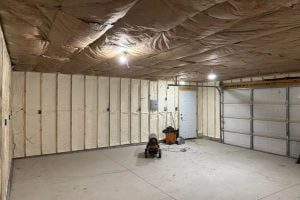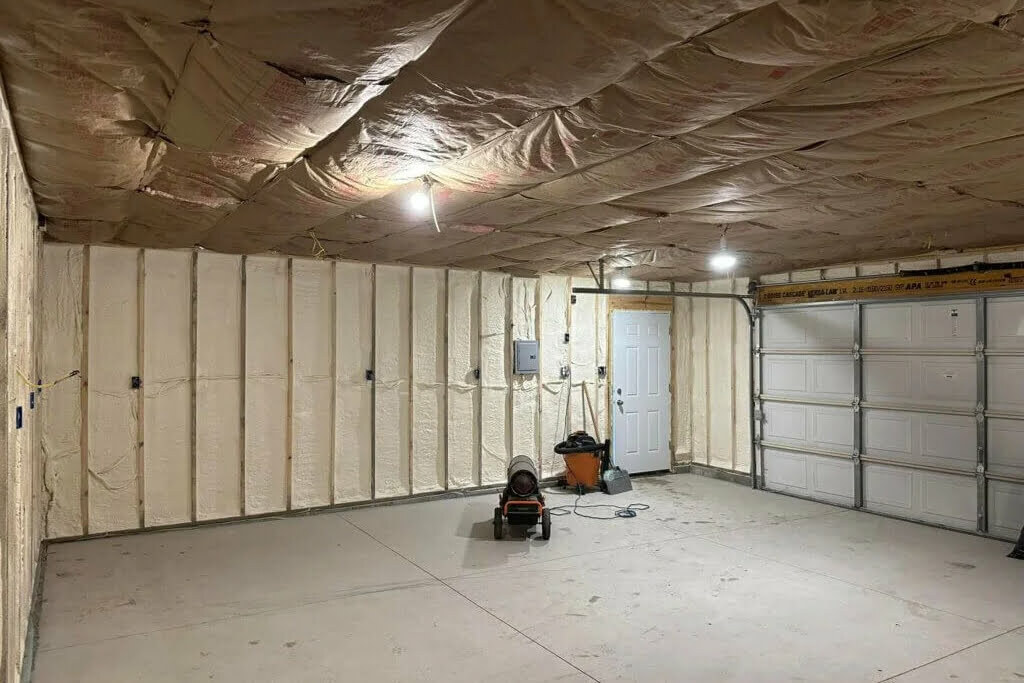 Do you know that insulation doesn’t expire? It doesn’t matter how long it has been since you’ve insulated your home, it keeps working. Keeping that in mind, the correct home insulation solution is a one-time deal that can last you a lifetime. If your home is not properly insulated, almost 30% of your home’s energy is wasted as it seeps through the floors, walls, and roof. Considering the virtual life-long guarantee, insulation is also pretty cost-effective. Once you’ve added insulation, you’ll start to see its benefits in your reduced heating bills, for example. Here are some things to learn about adding insulation to your home…
Do you know that insulation doesn’t expire? It doesn’t matter how long it has been since you’ve insulated your home, it keeps working. Keeping that in mind, the correct home insulation solution is a one-time deal that can last you a lifetime. If your home is not properly insulated, almost 30% of your home’s energy is wasted as it seeps through the floors, walls, and roof. Considering the virtual life-long guarantee, insulation is also pretty cost-effective. Once you’ve added insulation, you’ll start to see its benefits in your reduced heating bills, for example. Here are some things to learn about adding insulation to your home…
What Exactly Does Insulation Mean?
Insulation is the process of protecting your home from noise, weather, and other environmental occurrences. It means having your residence thermally managed. Even though most of the insulation is done regarding making your home thermally effective, there are also other reasons for insulation, such as fire insulation, impact insulation, and acoustic insulation. Insulation is used to block the passage of heat, cold, sound, or impact through your residence or place of choice. People most often opt for insulation to keep their homes cost-effective, and it’s becoming a significant feature of many homes in the area.
Different Types Of Insulation
Depending on what materials are used, there are four types of insulation:
- Cellulose insulation
- Fiberglass
- Mineral (rock or slag)
- Spray Foam insulation
Of the four types, spray foam insulation is the most commonly used insulation type. It prevents homes from getting too hot, too cold, and can help them from developing mold.
What Is Foam Insulation?
Spray foam is a kind of insulation material that is used to hinder the air from leaking through the walls, floors, or ceiling recesses. Spray foam is particularly practical when used in places that are hard to reach, such as small cavities in the ceiling or narrow holes in the floor. It is widely used for securing the spaces around light fixtures and power outlets or any other space where the windows and doors are placed. The ease of application into any opening is what makes spray foam insulation practical to use in any building construction — new or already existing. If there’s a visible cavity in your home that can be accessed, spray foam can be sprayed in.
Another plus of using foam for insulation is that it never loses its shape. The foam will fit like a glove in whatever opening, gap, crack, or crevice that you might have in your house. It won’t sag or compress over time, unlike other traditional insulation materials.
Why Choose Foam For Insulation?
Foam is the most sought-after insulation material among the other materials that can be used for insulating a home — and for a good reason. Homeowners opt for foam insulation because it won’t change shape, it won’t overflow the cavity, sag, or change the original shape of the space. Insulating your home with foam can help you keep the preferred temperature and can lower your electric bills. Foam locks the air in cavities and keeps it from passing through walls, floors, or ceilings, which leads to more cost-efficient energy management. Using foam to block drafts is easy — just spray it anywhere you think you might have a draft, and that’s it. The foam will expand and fit the crack.
What Else Can Foam Be Used For?
People living in places that experience severe shifts in weather conditions are more often faced with condensation issues because condensation tends to form when there’s a big change in the exterior and interior temperature. This will most commonly happen to windows with no or little insulation. In addition to energy management and draft control, homeowners use foam to deal with the condensation build-up in their walls. Insulation foam can stop differing air temperatures from meeting and causing condensation by sealing the air.
Foam insulation will also work wonders for preventing ice dams in winter. Those living in cold areas know well how irritating ice dams can get. Every time water on the roof freezes when the heat comes out from the attic and starts to melt it, it runs down and forms an ice dam near the gutter, at the lower side of the roof. To stop this from happening in your home, you can insulate the roof deck with foam to lock in the warm air and prevent it from leaking through the roof, melting the ice, and causing ice dams.
Will Insulating My Home With Foam Benefit Me?
As a homeowner, you’ll be getting the most from your money when using high-quality insulation. Insulating your home means you’ll be taking care of many of the issues that cause your energy bill to surge.
Here are some of the aspects that foam insulation can take care of:
- No more air leaks: Foam is made of polyurethane, allowing it to expand close to 100 times its size to fill and seal all cracks and cavities in your walls, floors, or ceilings, preventing the air from leaking.
- What’s sealed will stay sealed: Foam doesn’t budge, no matter how long it’s been since you’ve insulated the cracks in the ceiling. Foam doesn’t mess up the constriction of your walls, floors, or ceiling. It stays in place and does its job for years to come. Unlike other insulation materials, the foam doesn’t settle or sag. This makes it the most cost-efficient investment for insulation.
- No more allergens: Insulating your home with foam helps keep the allergens, dust, and pollutants from entering your living space — it even stops the build-up of bacteria and mold. Foam insulation is exceptionally beneficial for residential homes of families with children, this keeps the young ones growing up in a safe environment.
- Less energy loss: You will begin noticing less loss of energy after you have your home insulated with foam. This is because the foam will stop the hot and cold air from escaping the room – thus your AC or heater will not have to work so hard. This should help reduce your monthly bill.
- No infestations: Polyurethane doesn’t make a good nesting environment or food source. So, insects or rodents won’t be able to infest. Different than other insulation materials, the foam expands and fills the entire crack or opening in question, so there are no gaps for anything to settle in. Termites and other pests will also not enter because the foam can act as a barrier between any wooden construction.
How Expensive Is Foam Insulation?
The process of insulating your home in any form is costly. Considering everything you will be doing to keep your home safe, cost-efficient, and made to last, the cost of insulation doesn’t seem as bad since you’ll be getting your money’s worth.
The cost of insulating your home depends on several factors:
- The type of insulation and the material used
- Where your home is located
- Is it a new home or an older construction?
- The labor cost in your designated area
If you’re interested in insulating a newly constructed home, the insulation cost will be less than it would for insulating an older construction. When choosing the type of insulation, spray foam insulation is a bit more expensive than fiberglass insulation. However, the costs don’t even compare to the benefits you’ll be getting from foam insulation.
Should I Choose Foam Insulation For My Home?
Getting your home insulated is an obvious choice because you’ll be making an investment in your home that will last you a lifetime. Depending on your preferences and budget, there are four types of insulation to choose from: fiberglass, mineral, cellulose, and foam.
Comparing the benefits of each insulation type, foam insulation is the most energy-effective insulation that will deliver exactly what you want from insulation: cost-efficiency, comfort, lifetime guarantee, and safe living space.
If you have planned to insulate your home, choosing foam insulation will have you smiling in no time. Make sure to pick the right company to do all the heavy lifting, and you will be set for many years.
Contact Us (513-771-3626) for More Information -or- Get a Quote!
—
 About Cincinnati RetroFoam
About Cincinnati RetroFoam
Cincinnati RetroFoam is an experienced insulation contractor providing injection foam, spray foam, and blown-in insulation services to the Cincinnati, Dayton, Northern Kentucky & South-East Indiana Areas. Cold Annoying Drafts? Outrageous Energy Bills? Improve Your Home with Insulation.
> Learn More

